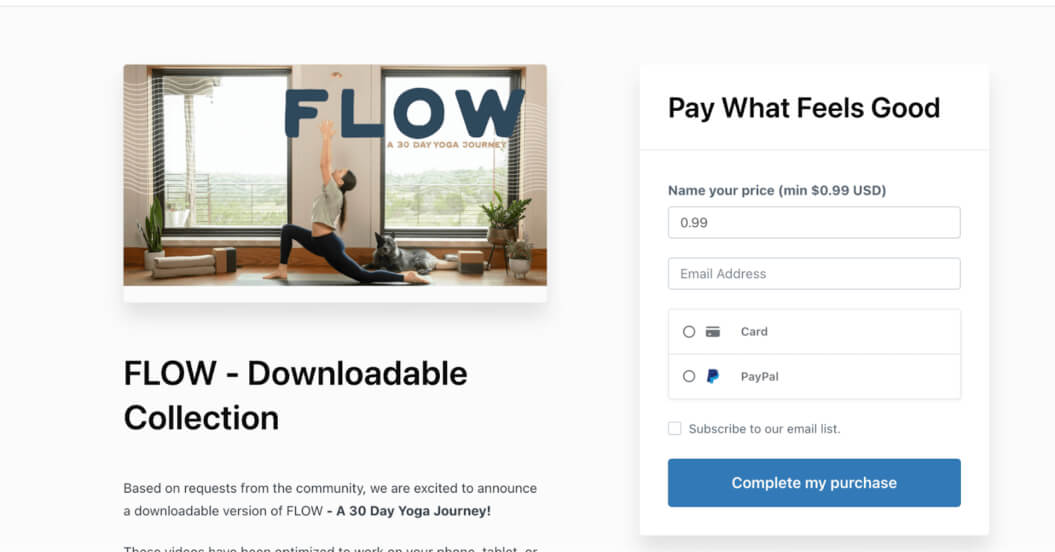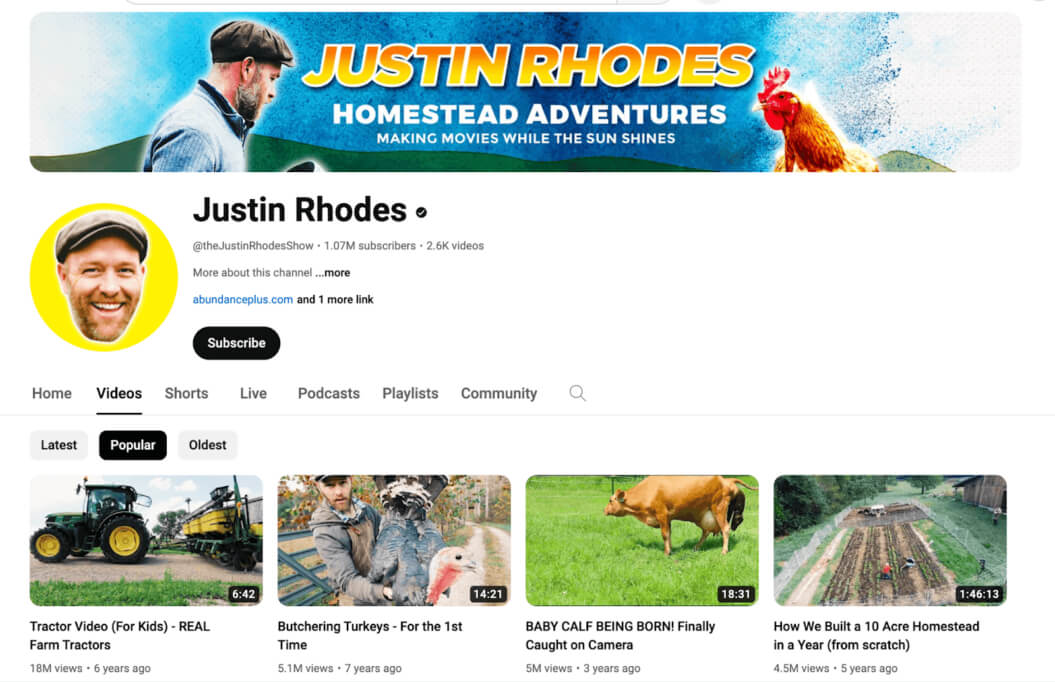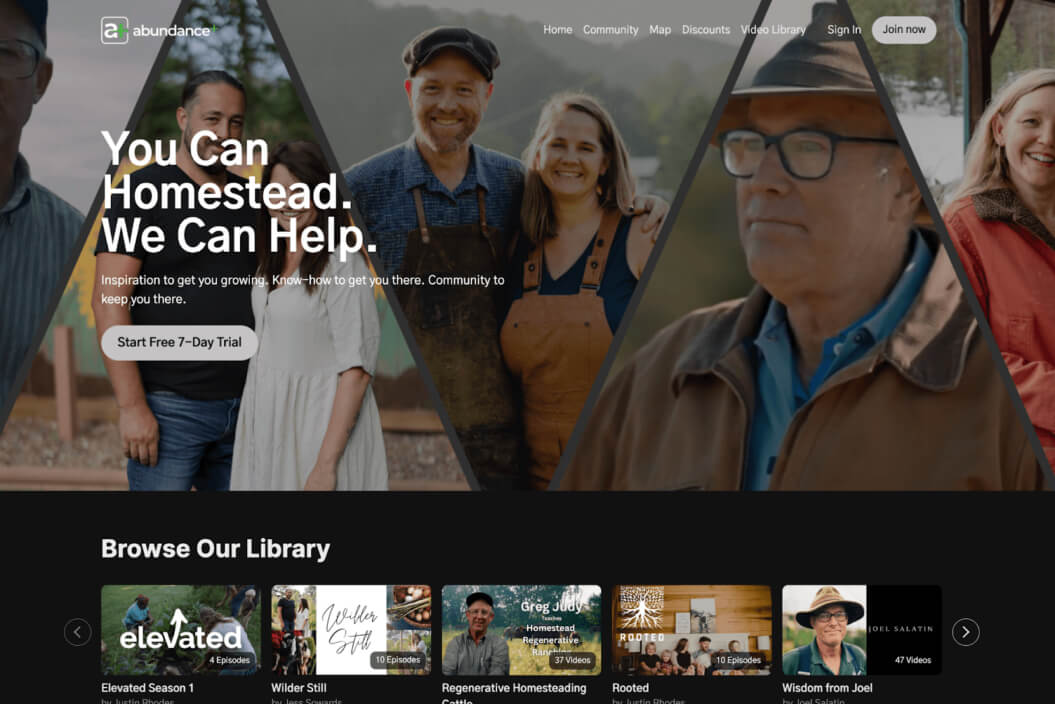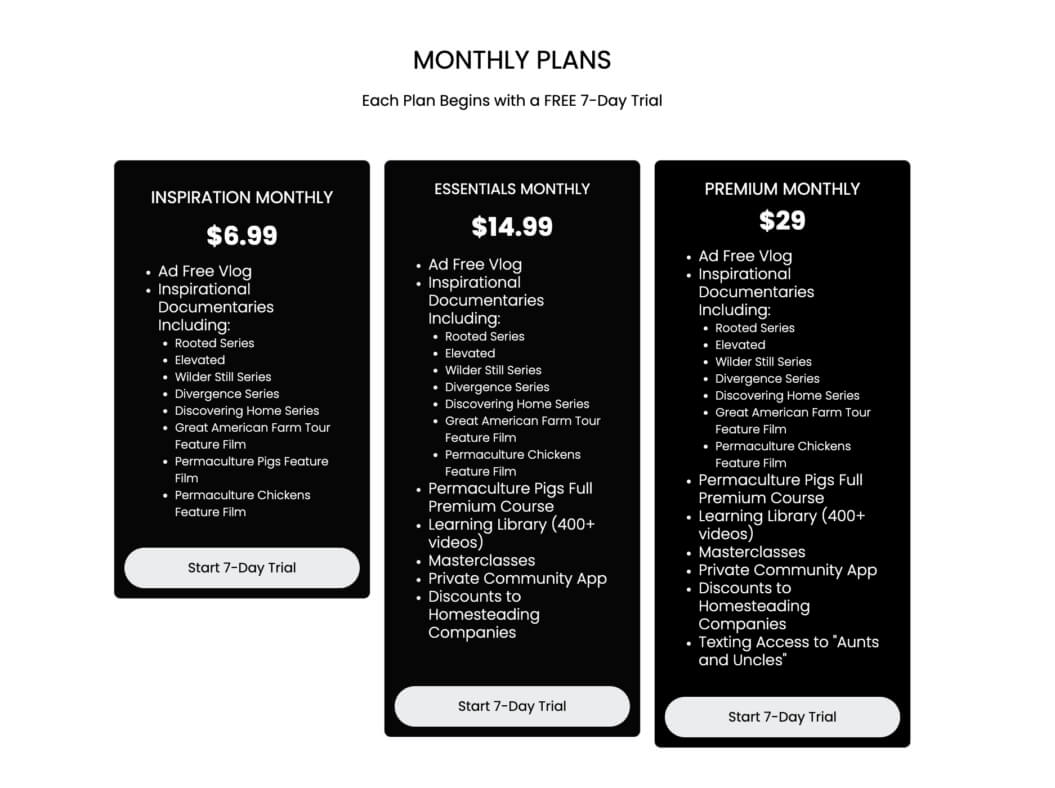PVOD streaming is a hot topic right now.
And, as a creator looking for different ways to earn from your content, you’ve probably come across PVOD – and a few other VOD methods – that could help you build a business.
But you’re wondering which one is right for you?
Well, we’ve got you covered.
In this guide, I’m going to walk you through PVOD streaming to help you decide if it’s the right way to monetize your videos in 2024.
What is PVOD Streaming?
PVOD streaming – or Premium Video on Demand – is a type of transactional content delivery that allows creators to sell early access to their most in-demand content before it’s widely released to all audiences.
The model has been widely used and popularized by the film and television industry to provide earlier access to newly released movies. Today, you’ll mostly find it used by streaming services like Disney+ and Amazon Prime.
Disney regularly have “premium releases” of their upcoming films where users pay for early access to a new movie or TV show. For example, they charged for early access to Raya the Last Dragon on their Disney+ streaming platform.

However, more creators are leveraging this business model to increase their earning potential. If you have an upcoming piece of high-quality video content – like a video series, course, routine, or something else – you can use Premium Video on Demand as a way to share it ahead of time (for a premium price, of course).
Take Uscreen customer, Abundance Plus, for example. They used the PVOD model by pre-releasing their Rooted mini-series on their membership site, behind a paywall, before later releasing parts of the series to be viewed freely by their YouTube audience.

The PVOD model can be integrated easily into the TVOD or SVOD model. Premium Video on Demand simply introduces the powerful element of exclusivity, making your premium video content even more appealing.
📔Editor’s Note
If you’ve done much research into starting your own video platform or online community, you’ve probably had a lot of “-VODs” thrown at you. (There are 3x of them in the last section alone!)
If you’re unsure what any of them mean, we have a guide below to walk you through the basics of the most popular VOD models.
AVOD, TVOD & SVOD Monetization Models

3 Benefits of PVOD for Creators
Let’s face it:
Premium Video on Demand is a pretty new concept. So, it’s not unreasonable for you to sit there and wonder what the benefits of adding another type of video on demand to your business are.
There are 3 main benefits of adding PVOD into your business model that can have a real, tangible impact on your growth and income.
1: PVOD lets you earn more money
Premium Video on Demand is a powerful way to start earning more money from your content. This can be really impactful if you’re currently generating most of your income through payouts and brand deals.
In fact, you can earn more from content you were already planning on releasing, just by having it ready-to-go a few days or weeks earlier than you’d planned.
That’s thanks to the core of the PVOD offering: exclusivity. Viewers will happily pay that premium price to access video content ahead of everyone else. Really, they’re paying for the feeling that they’re a part of an exclusive group with special perks.
You can charge anywhere from $5 to $50 or more for early access to your content. Depending on the size of your engaged audience, this can create a solid cashflow if you repeat it throughout the year!
Doing this can also let you test the waters of another business model…
2. PVOD lets you test premium content in a low-risk way
Chances are you’re already creating content on a free-to-watch platform like YouTube. And, you’re seriously considering going off-platform to earn money in a more reliable way: by creating your own platform to host your premium content.
But there’s one major worry for you: will your audience pay for your content?
PVOD allows you to find out the answer in a low-risk environment. You can set up one-off tests around pieces of content you think you could charge for, and see if the appetite is there!
Which leads to the final benefit…
3: PVOD lets you kick-start your community
The people who buy your premium content will be your true fans. (If you’re not familiar, check out 1000 True Fans by Kevin Kelly.)
And, they will have one thing in common: they want to be a part of something exclusive, aka your community.
By offering early-access to your content, you’re providing an exclusive space where your biggest fans can get together and connect over their shared interests.
This can help you to organically kickstart a strong, premium community where people are happy to pay for access to be a part of something bigger.
Using PVOD As A Creator: The 2 PVOD Models
If you’re sold on the benefits of PVOD streaming, let’s take a look at how you might want to use the model.
We’re going to explore 2 different PVOD models for 2 different use cases:
- If you want to offer one-off content
- If you want to offer subscription access to your content
Let’s take a look…
1. PVOD + The Once-Off Pricing Model
Perhaps you have a couple of big projects every year that require a lot more time and investment than your usual content.
You still want everyone in your audience to be able to access it for free (eventually), but your superfans would happily pay good money for an early and exclusive viewing.
In this case, you’d use the Premium Video on Demand business model and pair it with the one-off sales pricing model.
It’s exactly what it sounds like. Viewers pay a one-time fee in exchange for an exclusive, early-access viewing of your content.
Yoga With Adriene is a great example of how creators can leverage PVOD this way. She releases many of her yoga courses for free on YouTube, like this FLOW series from January 2024:
But all of these videos are pre-released on her Yoga With Adriene website, where she asks her audience to “pay what feels good” (a solid nod to her Find What Feels Good branded app).

This allows her to make money from the pre-release of her content, but also keep monetizing it for the long-term using TVOD through this model. An easy way to slot these 2 revenue streams together!
This can also work if you were always planning on selling access to your content, like for an online course.
Let’s say you’re a Photography YouTuber, and you’ve put together a course called Composition Masterclass that you want to sell for $99.
You could create a pre-release of this course for a premium fee – say, $150 – that you make available to your audience in advance.
This would be for a pre-defined “advanced release” period, that allows your die-hard fans to get the most out of the content, before you release it to the rest of your audience. The more you plan to charge, the longer this window will likely need to be.
Once the time has elapsed, you can release the content for the original $99 you planned, or even for free on your YouTube channel.
🔑Key information on the PVOD + once-off pricing model:
| Type of Creator | You’re looking to sell access to courses or mini-series on a one-off basis. This is your first time selling and you don’t want to deviate too much from the free or low-ticket content you’ve been creating elsewhere. |
| Earning Potential | $$$ |
| Pros | Earn extra money from your content Simple revenue model Great way to find “true fans” |
| Cons | One-off earnings Earning potential is limited without a large audience Potential for audience pushback if content is eventually “free” |
2. PVOD + The Subscription Pricing Model
Let’s say you create content on a weekly basis. You might have a video podcast, or a recurring video series. Either way, you build an audience that looks forward to your newly released content.
Most of your viewers are happy to wait and watch your content at the same time as everybody else. But, there’s also a segment of your audience who will happily pay a recurring fee for early access to each of those new releases.
In this case, you’d use the PVOD business model and pair it with the subscription pricing model.
With this approach, your fans pay a recurring subscription fee – usually on a monthly basis – in exchange for advanced access to your weekly releases.
With subscription-based PVOD, fans usually get unlimited access to your library of exclusive content. This is similar to how typical streaming platforms operate, except this offers the extra perk of early access.
This model is used a lot by YouTube creators. For example, The Basement Yard is a popular video podcast with over 650,000 YouTube subscribers.

To monetize the show beyond sponsorships, product placements, and AdSense, the podcast started a Patreon page.
Each episode is pre-released here one week in advance for all Patreon tiers, starting at just $5 a month.

While Patreon has it’s drawbacks as a long-term solution for creators, this is a low-risk way to test out whether your audience is willing to support your paywalled content.
🔑Key information on the PVOD + subscription pricing model:
| Type of Creator | You’re focused on community building, and want to build a long-term, reliable stream of revenue. You plan to create premium content in the future and this is the first step in scaling your business. |
| Earning Potential | $$$$ |
| Pros | Recurring revenueExclusive community space for fansReliable monetization alternative to platform payouts and brand deals |
| Cons | Requires an ongoing commitment to creating content and managing community members |
Bonus: if you want a mix of both…
If you really wanted to explore your options, you could do a mix of both the above models. This would look a little like the Disney+ example I showed you earlier, or how Amazon Prime currently sells films.
To make this work:
You would start by building a paid subscription platform where you host your main offering of content. You might have standalone content for this, or it could be paid for ease of access and organization.
From there, you would offer premium content for a one-off fee. This could be collections, mini-series, or courses that you sell early access to on top of their subscription.
However…
If this is your first time building a content-driven business, we recommend you take the keep it simple model and look at building momentum with one-off transactions or recurring subscriptions. You can always keep this in your back pocket for later!
How To Get Started With PVOD on Uscreen
If you want to get started with PVOD streaming, you’re going to need a platform to help you do it. That’s why we want to introduce you to Uscreen.
Uscreen is an all-in-one membership platform built for video creators like you. We help you to start, grow, and scale a content-driven business; especially if community is at the core of what you do.
We help creators prosper through meaningful connections, and give you the tools and support to help you do it. In fact, our creators earn an average of $12,000 per month!
Our features make using PVOD in your business easy, regardless of if you plan on selling one-off access or subscription content to your audience.
But, before we get into the features, let’s walk through an example of one of our creators who has used PVOD to drive real, tangible sales in their business.
How Abundance Plus use PVOD On Uscreen
Justin Rhodes is a YouTuber who creates homesteading content, sharing his own experiences and lessons with his over 1,000,000 followers on the platform.

Tired of the ups and downs of AdSense, Justin realized there was a high demand for his niche content – and he needed a better way to monetize it.
His goal was to give his subscribers a high-quality experience that YouTube couldn’t offer. So in 2021, he launched his own paid membership platform – Abundance Plus – with Uscreen.

While Justin has continued to create free content on his public YouTube channel, he creates even higher-quality, exclusive content for his membership.
Where does PVOD come in?
Well, every now and then, Justin will release some of his exclusive content for free on his YouTube channel. An example of this is his exclusive docu-series, Rooted.
But for a while before episodes of Rooted were released for free on YouTube, he released the series exclusively behind a paywall, and then – cleverly – promoted it to his YouTube following.

Justin funnelled tons of fans from his free YouTube channel to his paid membership, where they could watch Rooted as it was released to the rest of his community.

The Abundance Plus streaming service not only generated a lot of new leads for their recurring membership plans, but also got a bump in revenue from viewers who were specifically interested in the Rooted series.
Build, launch and manage your membership, all in one place.
Make PVOD Streaming Possible With Uscreen’s Features
Uscreen allows you to build a Netflix-style streaming experience for your audience. That means all of your videos, in one easy-to-customize library, behind a paywall where you set the prices.
Better still:
With our focus on community features, once your PVOD customers are on your platform, they can participate in a rich community of like-minded members. Pretty cool, right?

All of these functions together make it easy to set up PVOD streaming, and unlock a new world of monetization options.
Step 1: Choose your “base” monetization model
The first step is to choose the base monetization model that you’re going to build your PVOD streaming with. Earlier in the article we talked about your 2 main options:
- PVOD + one-off pricing model
- PVOD + subscription pricing model
Each of these monetization models serve creators with different needs.
The one-off access model is great for creators who are looking for a low-commitment way to test out content monetization.
The subscription model is better suited to full-time creators who are ready for an ongoing commitment. It’s a bigger commitment, but also has the biggest potential for generating revenue. This gives you the most reliable income over the long-term, with lots of potential to scale your business and grow your community.
You can learn more about why subscription-based businesses are the smart choice for creators in our YouTube video below:
Step 2: Customize your website
Designing your website is easy with Uscreen! You can choose from our collection of best-in-class website theme templates to customize.

For your PVOD streaming setup, there are 4 elements and pages that you’re going to want to add to your site. These will make it easier to convert people to your offer!
- Homepage: a page that clearly explains what you do and what you offer
- Sign up CTA: a button that sends people to your sign up page
- Pricing options: a breakdown of your PVOD price points (more on this next!)
- Catalog page: add content to your catalog so people can see what you offer
Step 3: Create your content plan
PVOD streaming is as much about content strategy as it is about monetization. That means you need as plan in place about what content you’re going to add to your platform.
Covering all the variations of this is a little beyond the scope of this article. But, there are some core questions you’ll need to be thinking about:
- How much content will be premium? Are you going to monetize every piece you push out, or are you going to choose a select few?
- How long will it be exlusive for? Will you do it for a few days, a few weeks, or a few months? (Your pricing will have a big impact on this as well!)
- How will you organize it? Will each video be standalone, or will you have a specific category in your Uscreen library?
- How will you notify people? How are you going to let people know that new content is there for people to see?
Nailing this down in a way that is repeatable and easy to manage for the first few months of your PVOD journey is going to be critical.
Step 4: Choose your price point
The next step is to choose what you’re going to charge for access to your Premium Video on Demand content. You’ll use one of the following PVOD pricing models:
- The Once-Off Pricing Model: for selling early access to individual pieces of PVOD content for a one-time fee.
- The Subscription Pricing Model: for selling early, ongoing access to new releases of exclusive content in exchange for a recurring fee.
When selling individual pieces of content with the one-off pricing model, how you price this will depend on a couple of factors – like how anticipated it is among your audience, how high-quality it is, and how much content you’re providing.
For example, a 30-minute podcast episode that’s released once per week will likely be worth less than a highly produced docu-series with hours of content released just once or twice per year.
For the subscription pricing model, we recommend creating 3 tiers of pricing to keep things simple.
These tiers will look like:
- Low price: your audience only gets access to your content for a nominal fee
- Mid price: your audience gets access to your content, plus some benefits
- High price: your audience gets access to your content, plus more benefits
To stick with the earlier example, Abundance Plus use tiers to price their memberships. Each tier provides a different set of benefits:

For your first iteration these benefits can be relatively simple, like access to some bonus content or perks in your community. You can expand and grow these over time.
But setting up your pricing this way allows you to test what people are willing to pay for your content, and potentially earn a little more money than you planned.
Use our free tool to pinpoint your ideal membership price in just 3 steps, leveraging a decade of data.
Step 5: Set up your marketing tools
Once your site and content is ready to start rolling out, you should definitely set up Uscreen’s automatied marketing tools. These are going to help you market your PVOD content and maximise your earnings!
We recommend you set up these 2 marketing tools before you launch:
- Email list: a tool that allows you to collect your audience’s email addresses of potential (e.g. MailChimp).
- Abandoned cart: a built-in Uscreen feature that automatically contact people who almost signed up for your platform
These are great tools that will allow you to take better ownership of your audience, and get some real insights into your premium audience.
We also offer a full suite of marketing tools to help you launch, grow, and retain customers of your subscription website if you want to explore them as well, where you can:
- Create coupons
- View in-depth analytics
- Offer gift cards
- Send push notifications
- Reduce churn
It’s definitely worth having a look around before you push your site live!
Build, launch and manage your membership, all in one place.
Wrapping this up…
PVOD streaming is a model that’s been well adopted by the media and film industry, and is finally becoming an option for creators and content-driven businesses.
You can use PVOD if you want to offer one-off sales, subscription plans, or a mix of the 2! But, to keep it simple, we highly recommend you start with one or the other.
Uscreen is the perfect platform to help you set up this type of business, with a wide range of features to make it easy, accessible, and profitable!
FAQs
The main difference between PVOD and SVOD streaming comes down to early access. PVOD streaming focused on providing advanced access to content that will eventually be shared for free – or a lower nominal fee – at a later date.
This can apply to content that is used in both one-off transactions or on subscription platforms. SVOD is focused on providing premium videos behind a paywall and a standalone platform. This content is usually exclusive to the platform, where you can only access it if you’re a subscribed customer.
Disney+ often makes use of PVOD streaming on their platform. When they have a major movie that they release, they will define a limited release period where subscribers can access the movie before it’s made available to stream by anyone currently using their service.






